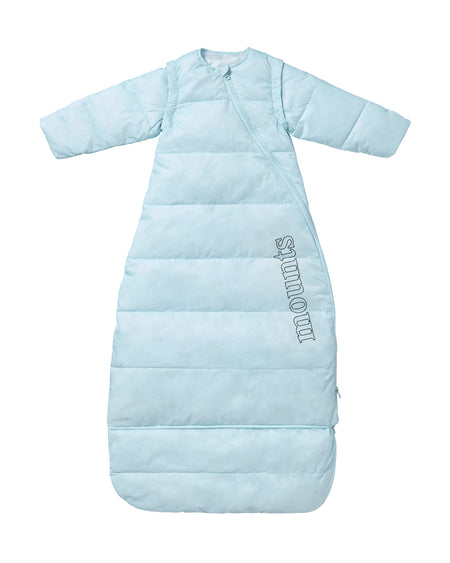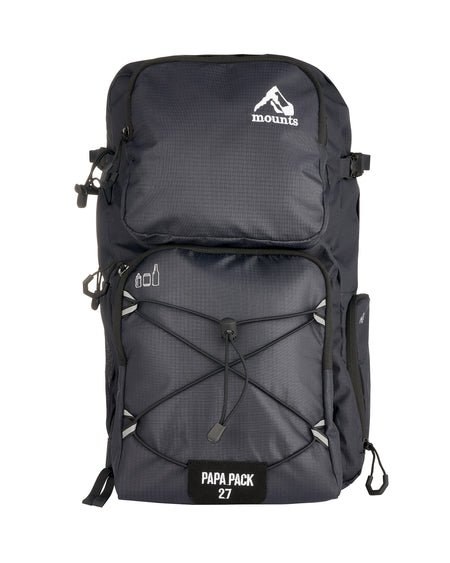Choosing A Tent For Young Family Camping
December 02 2020 – Timothy Butcher
Tent technology has progressed a lot in the last 30 years and these days there are endless designs, fabrics, structures and opinions about the best make and model of a tent. Tents serve a variety of purposes trying to balance the needs of climate, weight, strength, size and function for their intended use. We want to try to give you advice for parents thinking about their first return to the trail camping trip. We hope it is useful for first time campers and provides some food for thought for experienced outdoorsmen on their first outing as parents.
We recommend you also read our safe sleeping, sleep temperature, and getting back on the trail guides for additional context and help planning. In our opinion, all tents carry the same primary dilemma – how to provide a comfortable day nap and night sleep environment. A rested baby/ toddler takes the stress out of camping. A good tent allows for down time and ability to sort out lose ends on site while your child is snug in a safe space.

As you can see tents come in a variety of shapes. Tents can be freestanding retaining their shape before guy lines are installed (like many modern designs) or non-freestanding which retain shape from guy lines. Poles support the structure and can be rigid or flexible, collapsible or solid, and are secured by clips, zips, hooks, or sleeves. Square shape tents have higher internal height but are more susceptible to wind pressures. Designed for sleep, cabin variation stems from internal or external vestibules for gear storage, relaxing, eating, or other. The majority of products will show a sleeping configuration as a guide to determine how many adults can fit inside the tent lying down. They generally don’t show the height so consider if you need to stand (much easier/ quicker to get dressed), sit in chair (comfortable breastfeeding position), or jump over sleeping children.
The bones of a tent come in a variety of different fabrics and pole materials held together in a combination of ways. There are no absolute benefits between different varieties unless you are entering extreme environments (i.e. cold and wind). However, we absolutely recommend the tent be 3 season and the ground sheet is sewn-in to ensure rain, wind and bugs are free from a child’s environment. Fabrics come in canvas, nylon, polyester or polycotton blends. Traditional fabrics like canvas are heavier while synthetic fabrics are much lighter. All fabrics will have a chemical or natural treatment to ensure waterproofing. Poles range from wood, steel, aluminium, fiberglass and carbon fibre. Traditional materials like wood and steel are much stronger but are heavier while synthetic materials like fiberglass are lighter but weaker.
Tent walls have one or two layers of fabric with a variety of zips, velcro, screen/ netting, doors and windows. Inner dividing walls can be fixed or loosely held with hooks (providing safe or open space). Variations in fabric change weight, light opacity (a major factor in managing day naps) and their ability to manage ventilation. Moisture is captured inside a tent from exhaled breath and typically accumulates overnight as ventilation is lower (doors/ windows zipped shut) and outside temperature drops. Similar to the outside of a cold drink in warm weather but on the inside of the tent. The wetter the inside of the tent is the more susceptible to cold the users will be as the performance of gear diminishes (eg. sleeping bags and clothing). A double walled tent has the best moisture ventilation but could be heavier given the extra fabric.
As discussed in our other guides we believe the primary concern when camping with your baby or toddler is planning for where your child will be during necessary activities and ensuring a good nap environment. Fixing these will take away the major stresses of camping with young children. For example… Juggling your attention between setting up your tent and keeping them away from hazards is stressful, slows things down, and leaves less time for enjoyment. Think of your tent choice from a child management angle.
Ask yourself:
-
How you plan to arrive at the site?
-
By Vehicle, vehicle with small or large walk, totally by foot
-
-
How old and at what stage is your baby/ toddler?
-
Blob, Potted Plant, Assisted Walker, Confident Walker, Independent Walker
-
-
What is their sleep situation?
-
Do you need a travel crib, are they ok with light filled environment, will they wake before you or during the night potentially exploring for trouble
-
-
What is the season, weather forecast and level of humidity?
-
Do you need to worry about moisture, wind, or excessive heat, Can doors/ windows, be opened during rain, wind, or bug filled environments
-
-
How many hands are required to erect the tent?
-
Are you a party of 1, 2, or more adults
-
-
Are there separate cabins/ vestibules?
-
Are you able to hide dangerous/ dirty gear, can you safely keep a youngsters contained for brief period
-
Don’t believe you need to correctly solve for every scenario. The experience of being outdoors is always a problem solving exercise. Steer your experience towards being the safest and most memorable outcome.
The first major consideration in choosing a tent is just getting to site! You may have been backpacking into the bush for years and finally thinking of upgrading to something more luxury like a family sized tent completing dreams of hanging out with your young family in the wild. Think about how much distance you need to cover walking to site and how your baby/ toddler is going to do the same. Font carrier, backpack carrier, in your arms/ shoulders, or by themselves. Backpack carriers have very limited pack space compared to traditional backpacks. Family sized frame/ tunnel tents typically don’t fit inside a backpack, don’t come with shoulder straps and can give your forearms a workout over a short distance. The same applies for transporting a travel crib. How are you going to carry all this?
Your second major consideration in choosing a tent is putting up your tent! Think of how many hands are needed, if it is quick and where will your little one be while completing the shelter. Prepare for adverse weather which could extend the time to erect your tent.
Your third major consideration in choosing a tent is whether it is a safe environment for the baby/ toddler to be left alone and if they will feel comfortable while sleeping. 1 room vs 2 room vs 3 room. A 1 room environment, gear is in reach of little hands and the child may get over excited seeing mum or dad reducing their sleep. 2/ 3 room environment allows dangerous gear to be stored creating a safe environment to be alone in and potentially giving a better sleep environment away from mum and dad. Windows, doors, vents, netted and dividers. Discussed here a tent can become a sauna in direct sun light, if managing heat is needed large netted openings are great and be wary of see-through plastic windows that amplify sun rays. Often not shown in the brochure is if a room divider secures by a closed zip or is loose potentially allowing a baby/ toddler to climb through. If your plan is to make a room into a ‘safe place’ ensure it actually closes.
Some other pet features you may consider include blackout material to mimic home sleep, pockets or gear hangers located up high out of reach, rain proof outdoor vestibules for dirty gear or keeping gear out of reach.
Shop around, be prepared and have fun!






